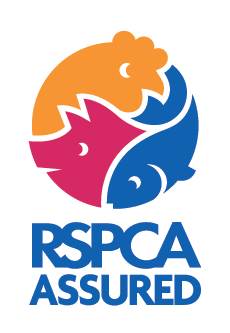Natural daylight
We are aware that the updated natural light standard is concerning some members, so we want to make it as easy as possible for you to understand how to implement the new standards. You can find a detailed document summarising the research on the benefits of natural daylight here.
How to calculate the % of natural daylight already provided to your birds
We’ve provided a simple calculation to help you work out if your house would comply with the updated requirement:
The standards require 3% of the total floor area of the house. Please note this is the floor area where the birds are kept (excluding any veranda present). Essentially, if you were to clear the whole house of all furniture, then it’s the total internal floor area of the building.
% natural daylight provision = pophole area / total floor area
Result:
%
According to these measurements, your house will not meet the current requirements and will need to be updated at your next refurbishment.
Your measurements meet our standards.
Key clarification points:
- Free-range members must provide 3% natural daylight to hens at the time of refurbishment cycles or by 1 January 2035*, whichever is sooner.
- When carrying out planned internal refurbishments, free-range members must include the extension of pop holes or light inlets (i.e. windows) within the current structural framework of the house to meet 3% natural daylight.
- From 1 October 2025, free-range members who are building a new house or conducting major structural refurbishments to an existing house must provide 3% natural daylight through windows. This is in addition to the natural daylight provided through pop holes.
- From 1 October 2025, all free-range hens must have access to natural daylight through their pop holes during housing orders (e.g. in the event of AI outbreaks). In order to achieve this, producers could put clear material (e.g. acrylic) over pop holes, rather than closing them, when birds need to be housed during the natural daylight period. If hens are placed before 1st October, members can wait until they depopulate and place the next flock to meet this requirement.
- For barn houses, 3% natural daylight must be provided by windows by 1 May 2032, whilst any newly built barn houses after 1 October 2025 must meet this requirement.
We look forward to supporting our members in achieving these over the coming years. Members who need advice or have any questions about meeting the standard can contact RSPCA Assured’s farming and technical engagement team, who will be happy to help.
*The RSPCA and RSPCA Assured’s driving priority is to support all members in achieving the standard by 2035. If 3% minimum natural daylight cannot be reasonably and realistically achieved through refurbishment by 2035, a five-year derogation will be available for members to apply for - if they can commit to refurbishing to 3% natural daylight by 2040. Any member granted a derogation will be subject to certain conditions.
Additional information about natural daylight openings:
Natural daylight openings may have slightly translucent coverings to diffuse light. This may be useful for popholes that are used as light openings to minimise direct streams of light entering the house.
Some natural daylight openings may have rack-and-pinion covers that can be adjusted to manage the light entering the house. In some cases, these may be lowered to manage bright patches of light from entering the house. These covers should still allow a good amount of natural daylight to enter. As a guide, these should not be closed more than 45 degrees.
If there is a housing order and popholes are used to meet the daylight requirements, there may be a period where popholes are covered to reduce the risk of birds smothering when range access is restricted. A gradual opening of the pophole covers should take place to ensure the birds are still provided with natural daylight during a housing order.
Natural daylight openings may be closed if directed by a vet to manage injurious feather pecking, but this must be a last resort.
Find a useful range of working examples for natural daylight implementation here.
